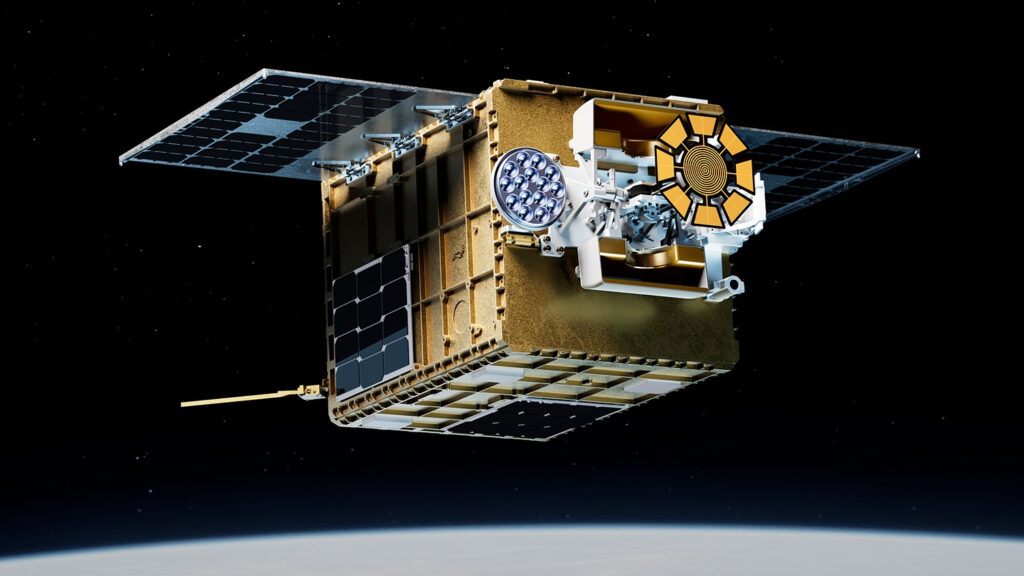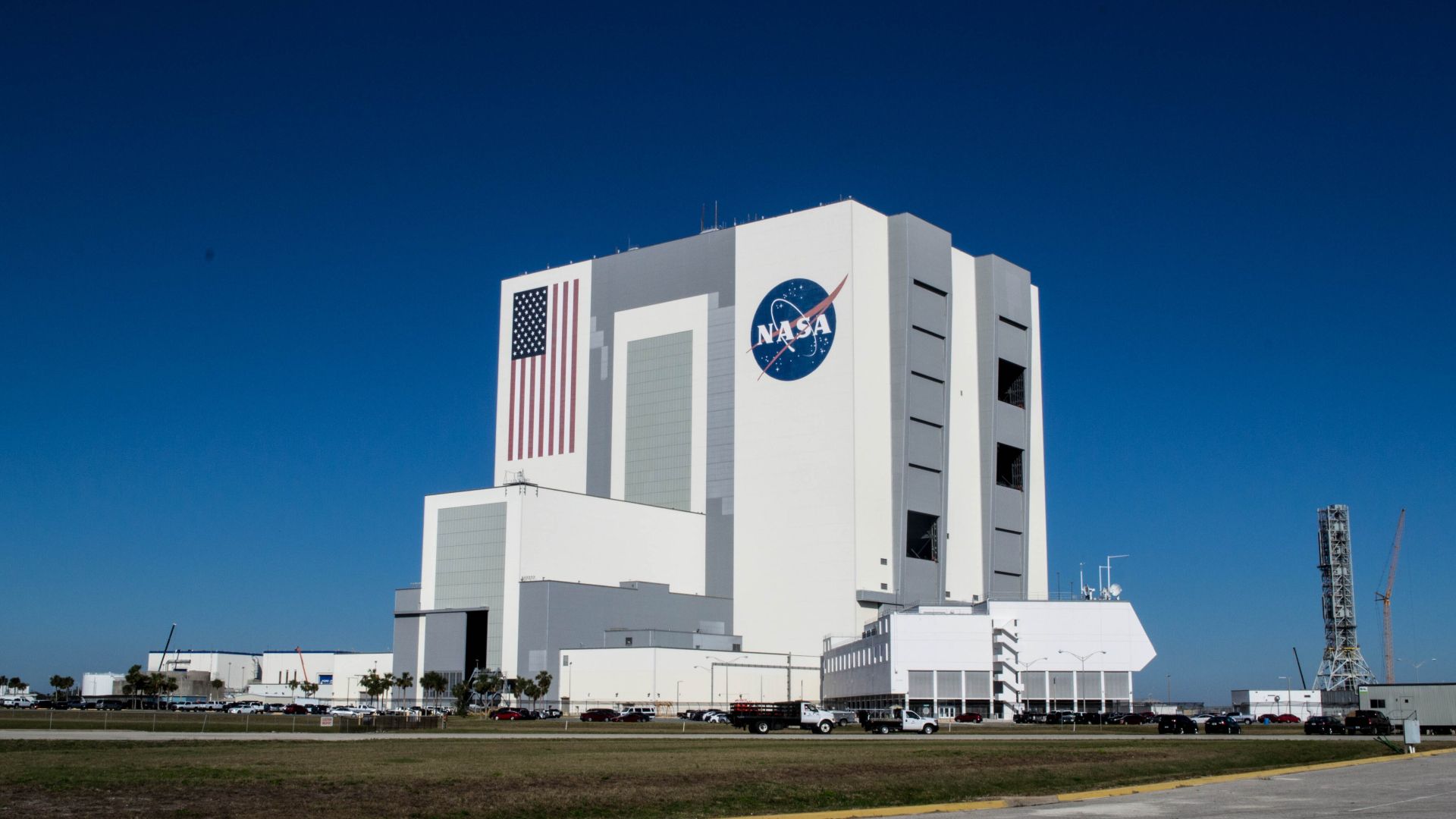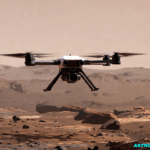Now Reading: NASA stacks Artemis 2 moon mission’s Orion capsule atop SLS rocket ahead of 2026 launch
-
01
NASA stacks Artemis 2 moon mission’s Orion capsule atop SLS rocket ahead of 2026 launch
NASA stacks Artemis 2 moon mission’s Orion capsule atop SLS rocket ahead of 2026 launch
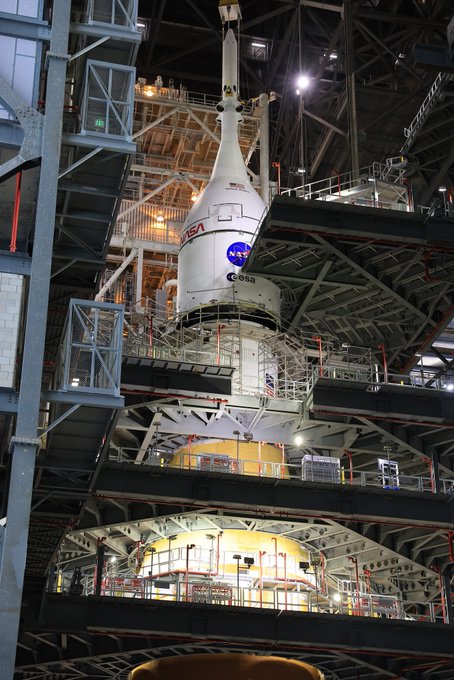
The towering rocket tasked with launching NASA’s next moon astronauts on their historic lunar journey has come together.
The Space Launch System (SLS) rocket being stacked for the Artemis 2 mission has its final piece. Integrity, the Orion spacecraft that will fly NASA’s Artemis 2 crew around the moon as early as February 2026, was recently transported across NASA’s Kennedy Space Center (KSC) in Florida to the Vehicle Assembly Building (VAB) and hoisted atop SLS, completing the rocket’s assembly ahead of launch.
It’s a major milestone for the mission, which has been marked a priority and exempt from NASA’s widespread shuttering during the ongoing government shutdown. Acting NASA Administrator Sean Duffy announced the milestone in a social media post on Monday (Oct. 20), saying, “We are one step closer to mission complete!”
Artemis 2 is NASA’s second mission in the Artemis program, which aims to establish a permanent human presence on the moon, and eventually lay the foundation for astronaut trips to Mars. It will be the first crewed mission of the program, and will fly four NASA astronauts on a loop around the moon and back — the first crewed lunar mission since the Apollo program ended in 1972.
NASA astronauts Reid Wiseman, Victor Glover and Christina Koch, as well as Canadian Space Agency astronaut Jeremy Hansen, will fly Integrity on a free-return trajectory, circling once around the lunar far side before heading back to Earth.
Their 10-day mission is currently targeted for as early as Feb. 5, 2026, with launch windows available through the end of April. Its predecessor, Artemis 1, launched in November 2022, and carried several sensors but no life support systems or astronauts. Artemis 2 will be the first crewed test of Orion and will pave the way for Artemis 3, which will land a crew on the moon’s surface in 2027 or 2028.
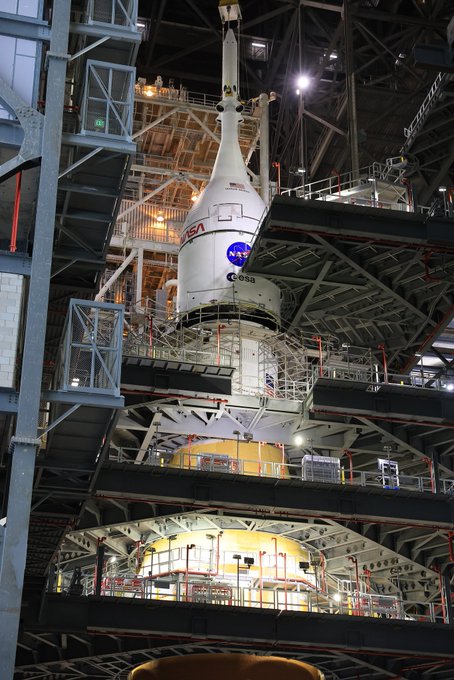
The last major hardware component before Artemis II launches early next year has been installed. 🚀🇺🇸🌕 “Integrity” is our Orion spacecraft that will hold the Artemis II astronauts on their trip around the Moon. It’s now fully attached to the Space Launch System and we are one… pic.twitter.com/tjq5RW9AbdOctober 20, 2025
Delays have been a familiar occurrence for the Artemis program, however. Issues with Orion’s heat shield during reentry through Earth’s atmosphere at the end of Artemis 1 created a more than three year gap between Artemis’s first and second launches. Now, as the program is beginning to pick up some momentum, concerns about the readiness of SpaceX’s Starship, which is contracted as the Artemis 3 lunar lander, are pushing a lunar landing even further.
NASA was targeting mid-2027 for Artemis 3, though that date appears to be slipping, despite Artemis 2 remaining on track for a launch in early 2026. In an interview on CNBC’s “Squawk Box” on Monday, Duffy suggested that Artemis 3 will likely launch sometime in 2028, and the space agency is considering other landing options.
Stay Informed With the Latest & Most Important News
Previous Post
Next Post
-
 01From Polymerization-Enabled Folding and Assembly to Chemical Evolution: Key Processes for Emergence of Functional Polymers in the Origin of Life
01From Polymerization-Enabled Folding and Assembly to Chemical Evolution: Key Processes for Emergence of Functional Polymers in the Origin of Life -
 02Panasonic Leica Summilux DG 15mm f/1.7 ASPH review
02Panasonic Leica Summilux DG 15mm f/1.7 ASPH review -
 03How New NASA, India Earth Satellite NISAR Will See Earth
03How New NASA, India Earth Satellite NISAR Will See Earth -
 04And Thus Begins A New Year For Life On Earth
04And Thus Begins A New Year For Life On Earth -
 05Astronomy Activation Ambassadors: A New Era
05Astronomy Activation Ambassadors: A New Era -
06SpaceX launch surge helps set new global launch record in 2024
-
 07Two Black Holes Observed Circling Each Other for the First Time
07Two Black Holes Observed Circling Each Other for the First Time














